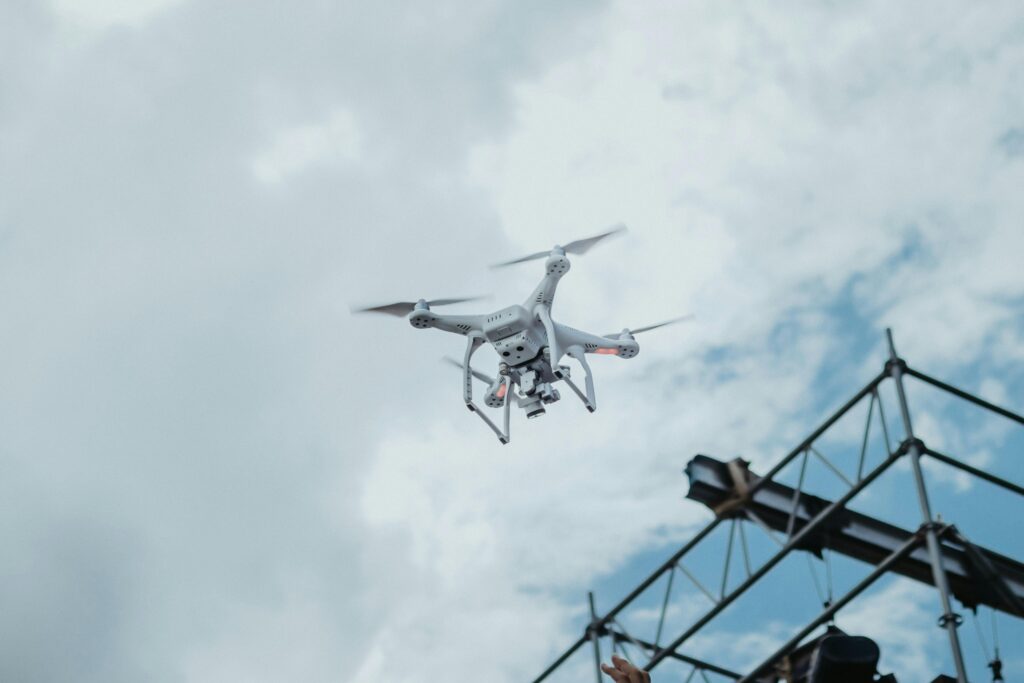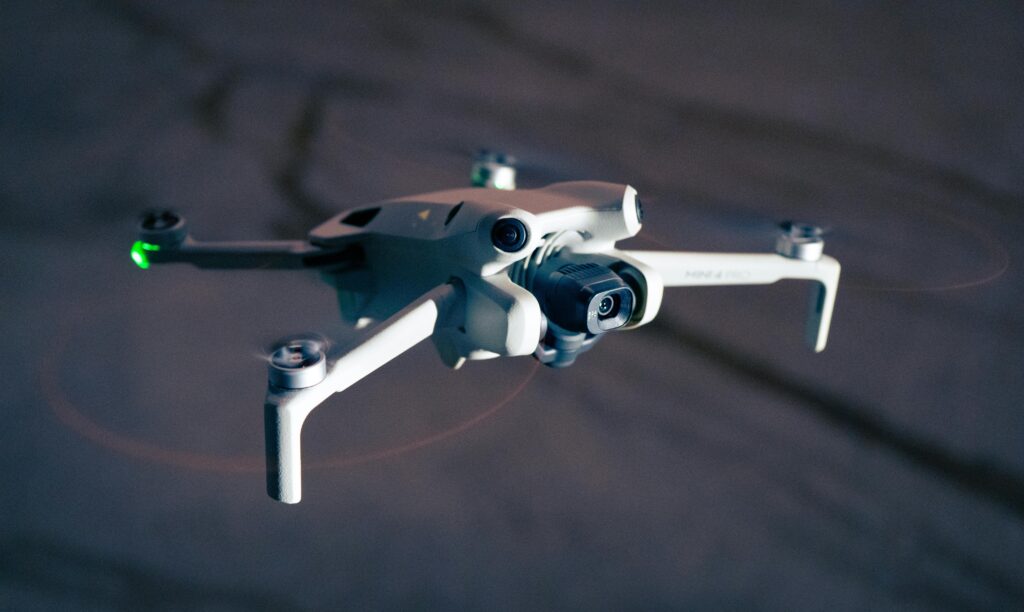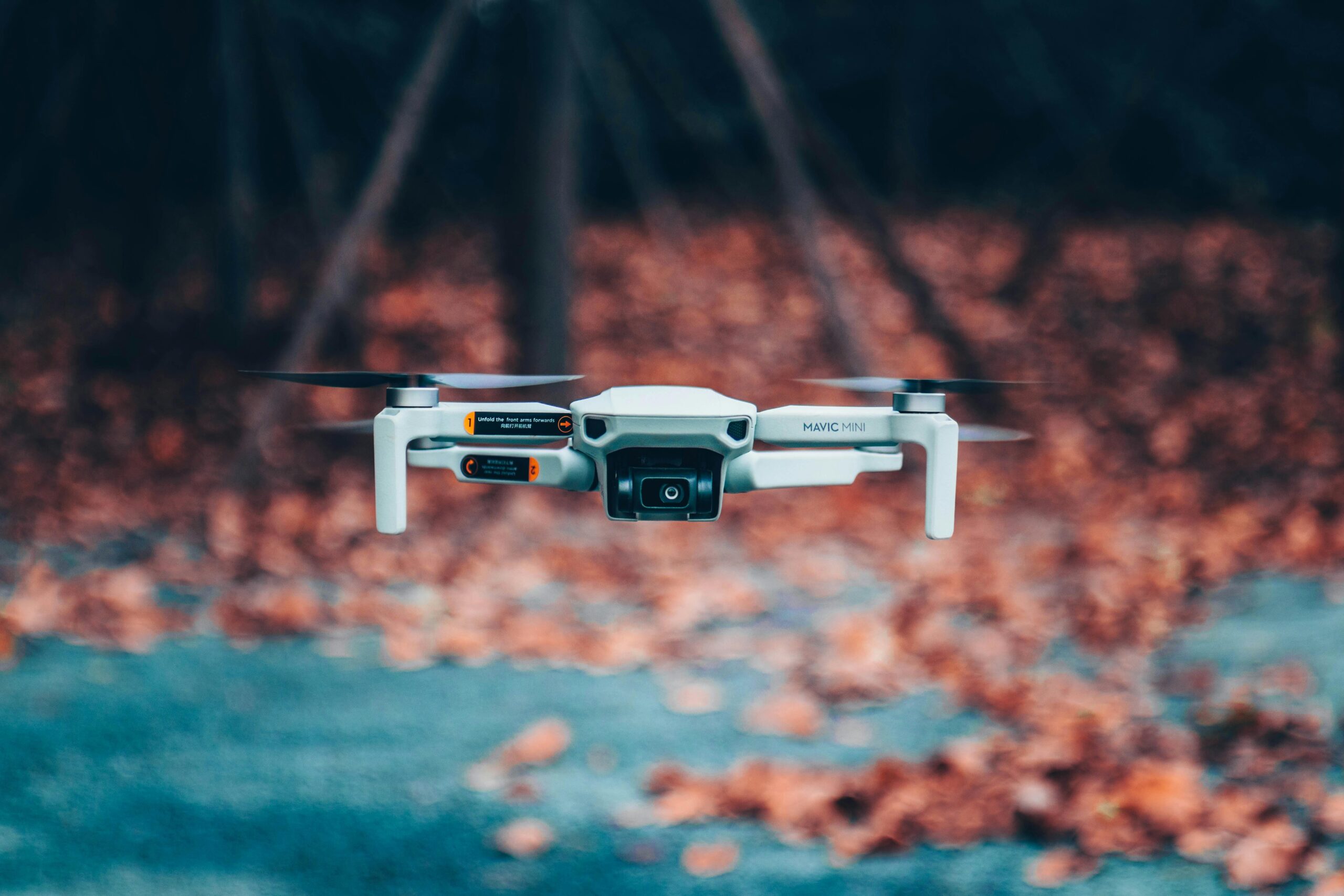The world of autonomous systems and drone technology is experiencing unprecedented growth and innovation in 2025. From AI-powered swarm intelligence to revolutionary battlefield applications, these cutting-edge technologies are reshaping industries, transforming warfare, and opening new horizons for commercial applications. Bottom Line Up Front: The autonomous drones market is projected to hit $54.92 billion by 2029 with a 21.5% CAGR, driven by breakthroughs in artificial intelligence, swarm technology, and autonomous navigation systems that are revolutionizing everything from delivery services to combat operations.
The Rise of Autonomous Intelligence in Drone Operations
Modern autonomous systems represent a dramatic shift from traditional remote-controlled aircraft to intelligent machines capable of independent decision-making. These advanced aerial systems are being used to improve productivity and reduce operational risks, especially in large-scale critical infrastructure and heavy industrial sites.
The integration of artificial intelligence has fundamentally transformed how drones operate. In 2025, the landscape of drone operations is rapidly evolving thanks to advancements in artificial intelligence and automation. These systems now leverage sophisticated algorithms that enable real-time environmental awareness, adaptive mission planning, and autonomous decision-making capabilities.
Advanced sensor fusion technology represents one of the most significant breakthroughs in autonomous systems. Advanced sensor fusion and environmental awareness are transforming how drones perceive the world, enabling them to operate safely and efficiently in increasingly complex environments. This technological leap allows drones to process multiple data streams simultaneously, creating comprehensive situational awareness that rivals human perception.
Revolutionary Swarm Intelligence Technologies
Perhaps the most exciting development in autonomous systems is the emergence of swarm intelligence. One of the most impactful developments is autonomous swarm intelligence, which allows multiple drones to operate collectively as a coordinated unit, much like a swarm of bees. This breakthrough technology enables unprecedented coordination between multiple unmanned systems.
The distributed intelligence approach marks a paradigm shift in drone operations. Instead of relying on a central command system, these swarms employ distributed intelligence. Each drone contributes to the overall decision-making process while maintaining a degree of individual autonomy. This decentralized architecture provides remarkable resilience and adaptability in complex operational environments.
Military applications are driving rapid advancement in swarm technologies. Modern combat operations demand a high degree of autonomy from unmanned systems, the ability to adapt to changing conditions, and real-time coordination of actions. These requirements are pushing the boundaries of what’s possible with autonomous swarm coordination.
Combat-Proven Autonomous Navigation Systems
The ongoing conflict in Ukraine has become a real-world testing ground for autonomous drone technologies. Ukraine’s battlefield experience reflects a shift toward unmanned systems that augment or attempt to replace human operators in the most dangerous missions. This extensive combat testing is accelerating technological development at an unprecedented pace.
One of the most significant challenges facing modern drones is electronic warfare interference. However, breakthrough solutions are emerging. One way that drone operators can defeat electronic jamming is by communicating with their drone via a fiber optic line that pays out of a spool as the drone flies. While this approach has limitations, it demonstrates the innovative solutions being developed to overcome jamming.
The future lies in complete autonomous navigation systems. Meier expects that by the end of 2025, firms including his own will introduce fully autonomous solutions encompassing visual navigation to overcome GPS jamming, as well as terminal guidance and smart target recognition. These systems represent the next generation of autonomous technology that can operate effectively even in heavily contested electromagnetic environments.
AI-Powered Navigation and Waypoint Systems
The commercial sector is experiencing its own revolution in autonomous navigation. Key industry players such as DJI, Parrot, and Lockheed Martin are investing heavily in the development of advanced waypoint navigation technologies. These investments are driving innovations in real-time obstacle avoidance, dynamic rerouting, and cloud-based mission planning.
The integration of 5G networks and edge computing is enhancing autonomous capabilities significantly. The proliferation of 5G networks and edge computing is further enhancing the capabilities of these systems, enabling real-time data processing and adaptive flight path optimization. This technological convergence is creating new possibilities for autonomous operations in urban environments.
Artificial intelligence is becoming central to navigation systems. Integrating artificial intelligence and machine learning can enhance real-time decision-making, adaptive path planning, and autonomous obstacle avoidance. These AI-driven systems are making drones more adaptable and capable of handling complex, dynamic environments.
The Drone-in-a-Box Revolution
Industrial applications are being transformed by autonomous drone systems that require minimal human intervention. Often referred to as “drone-in-a-box” systems, this technology is reshaping industrial processes by automating time-consuming tasks and providing data-driven insights. These systems represent a significant leap toward fully automated aerial operations.
The convenience and reliability of these systems are driving widespread adoption. These autonomous drones are becoming popular because they provide on-demand availability, convenience, and reliable data collection. Industrial sites can now maintain 24/7 aerial surveillance and data collection capabilities with minimal human oversight.
The operational advantages are substantial. On industrial sites, a drone-in-a-box can operate 24/7, collecting consistent data, eliminating human errors, and offering AI-driven insights. This capability enables faster incident response and provides real-time situational awareness that was previously impossible to achieve cost-effectively.
Heavy-Lift and Specialized Applications

The heavy-lift drone sector is experiencing remarkable growth and innovation. As 2025 unfolds, heavy-lift drones are on the cusp of unprecedented evolution, driven by technological breakthroughs and a shifting regulatory landscape. These powerful systems are opening new applications in construction, emergency response, and cargo delivery.
Autonomous capabilities are being integrated into heavy-lift platforms. ASW anticipates a future where heavy-lift drones become increasingly autonomous, with advancements in artificial intelligence enabling them to execute complex missions with minimal human intervention. This development is particularly significant for applications requiring precise cargo placement in challenging environments.
Safety technologies are enabling operations in populated areas. The integration of Parasafe safety technology from ASW’s sister company ensures that these drones meet stringent safety regulations, enabling secure operations even in densely populated areas. This safety advancement is crucial for expanding heavy-lift operations into urban environments.
Beyond Visual Line of Sight Operations
Regulatory frameworks are evolving to enable more advanced autonomous operations. BVLOS operations, where drones are flown beyond the operator’s direct line of sight, are becoming more feasible thanks to advancements in automation, satellite communications, and collision-avoidance systems. This regulatory evolution is essential for realizing the full potential of autonomous systems.
The development of urban air mobility presents new challenges and opportunities. The rise of urban air mobility (UAM), which envisions the use of autonomous drones and air taxis in densely populated urban environments, presents new regulatory challenges. Successfully addressing these challenges will unlock tremendous commercial potential.
Air traffic management systems must evolve to accommodate increasing drone traffic. Air traffic management systems will also need to evolve to accommodate high volumes of UAS in urban areas. This evolution is critical for enabling the dense autonomous operations that future smart cities will require.
Market Growth and Economic Impact
The economic potential of autonomous systems is enormous. According to a recent 2025 report, the global UAV market is set to skyrocket from $28.5 billion in 2021 to $58.4 billion by 2028, and autonomy is at the heart of that surge. This remarkable growth reflects the increasing adoption of autonomous technologies across multiple industries.
Defense spending is driving significant innovation. In 2024, the U.S. Department of Defense requested an estimated $10.95 billion to support uncrewed vehicle acquisition and development, which covers drones. This substantial investment is accelerating technological development and creating spillover benefits for civilian applications.
The convergence of multiple technologies is creating new market opportunities. Robotics now intersects with artificial intelligence, material science, and bioengineering, pushing the boundaries of automation, adaptability, and functionality. This technological convergence is enabling capabilities that were previously impossible.
Challenges and Future Outlook
Despite remarkable progress, significant challenges remain. Integration into shared airspace continues to be complex. One of the biggest hurdles for autonomous UAVs is integrating them safely into shared airspace with crewed aircraft. Solving this challenge requires sophisticated collision avoidance systems and advanced air traffic management.
Cybersecurity concerns are growing with increased connectivity. As UAVs become more connected, they also become more susceptible to cybersecurity threats. Addressing these vulnerabilities is essential for maintaining public trust and operational security.
The skills gap represents another significant challenge. The robotics industry faces a skills gap, as the current workforce lacks the expertise to implement and manage automated robots. Addressing this requires coordinated efforts in education and training programs.
Revolutionary Robotics Integration
The convergence of robotics and autonomous systems is creating new possibilities. Robotics researchers are no strangers to artificial intelligence—it has for years helped robots detect objects in their path, for example. However, recent breakthroughs in large language models are revolutionizing how robots learn and adapt.
Fast-learning capabilities are transforming robot training. By merging these data sources properly into a new AI model, it’s possible to train a robot that, though not perfect, has a massive head start over those trained with more manual methods. This breakthrough is significantly reducing the time and resources required to deploy capable autonomous systems.
The integration of different data sources is enabling more versatile systems. Seeing so many ways that a single task can be done makes it easier for AI models to improvise, and to surmise what a robot’s next move should be in the real world. This capability is essential for creating truly autonomous systems that can operate in unpredictable environments.
What Applications Are Transforming Industries?
Autonomous systems are revolutionizing multiple sectors simultaneously. In agriculture, these systems are optimizing crop monitoring, precision spraying, and harvest operations. Manufacturing facilities are implementing autonomous drones for quality control, inventory management, and safety inspections.
Emergency response capabilities are being enhanced dramatically. Autonomous search and rescue operations can cover vast areas more efficiently than human teams, while maintaining operator safety. These systems can operate in hazardous conditions that would be too dangerous for human rescuers.
Infrastructure monitoring has become more cost-effective and comprehensive. Power line inspections, pipeline monitoring, and bridge assessments can now be conducted regularly using autonomous systems, detecting problems before they become critical failures.
How Are Regulatory Frameworks Evolving?

Government agencies worldwide are adapting regulations to enable safe autonomous operations. The Federal Aviation Administration continues updating airspace integration requirements, while international bodies work toward standardized protocols for cross-border operations.
Certification processes are becoming more sophisticated to address the unique challenges of autonomous systems. New testing procedures evaluate not just mechanical reliability, but also the decision-making capabilities of AI-powered systems.
Privacy and security regulations are evolving to address the data collection capabilities of modern autonomous systems. Balancing operational requirements with privacy protection remains an ongoing challenge for regulators.
What Cybersecurity Measures Are Essential?
Autonomous systems require robust cybersecurity frameworks to protect against various threats. Encryption protocols must secure communication channels between drones and control systems, while authentication mechanisms prevent unauthorized access.
Resilient system architectures are being developed to maintain operations even under cyber attack. These include redundant communication pathways, local decision-making capabilities, and secure fail-safe protocols.
Regular security updates and vulnerability assessments are becoming standard practice. The dynamic nature of cyber threats requires continuous monitoring and rapid response capabilities.
How Will Urban Integration Develop?
Smart city initiatives are incorporating autonomous systems into their infrastructure planning. Traffic management, environmental monitoring, and emergency response systems are all being enhanced through autonomous drone integration.
Public acceptance remains crucial for successful urban deployment. Education programs and demonstration projects are helping communities understand the benefits while addressing safety concerns.
Integration with existing urban infrastructure requires careful planning and coordination. Power systems, communication networks, and emergency services must all adapt to support autonomous operations.
Frequently Asked Questions
What Makes Modern Drones Truly Autonomous?
Modern autonomous drones combine multiple technologies to achieve independent operation. Advanced AI algorithms process sensor data in real-time, enabling obstacle avoidance and dynamic path planning. Machine learning capabilities allow these systems to improve performance through experience, while sophisticated navigation systems maintain accuracy even when GPS signals are compromised.
How Do Swarm Drones Coordinate Without Central Control?
Swarm intelligence relies on distributed algorithms where each drone follows simple rules while communicating with nearby units. This creates emergent behavior where the collective demonstrates intelligence beyond individual capabilities. Communication protocols enable real-time coordination, while redundant pathways ensure swarm cohesion even if individual units are lost.
What Are the Primary Commercial Applications for Autonomous Systems?
Commercial applications span numerous industries, from delivery and logistics to infrastructure inspection and agricultural monitoring. Industrial sites use drone-in-a-box systems for 24/7 surveillance and data collection, while emergency services deploy autonomous systems for search and rescue operations in hazardous environments.
How Do Autonomous Drones Handle Electronic Warfare Interference?
Modern systems employ multiple countermeasures including visual navigation systems that don’t rely on GPS, fiber optic communication links that resist jamming, and AI algorithms that can maintain mission effectiveness even under electronic attack. Terminal guidance systems enable target engagement even when communication is disrupted.
What Safety Measures Protect Against Autonomous System Failures?
Comprehensive safety systems include redundant sensors and communication pathways, fail-safe protocols that ensure safe landing in emergency situations, and geofencing capabilities that prevent operations in restricted areas. Advanced collision avoidance systems protect both the aircraft and surrounding assets.
How Are Regulations Adapting to Autonomous Technology?
Regulatory frameworks are evolving to address Beyond Visual Line of Sight operations, urban air mobility, and autonomous decision-making capabilities. New certification processes evaluate AI systems alongside traditional mechanical components, while international cooperation aims to standardize protocols for cross-border operations.
What Skills Are Required for Operating Autonomous Systems?
While autonomous systems reduce the need for traditional piloting skills, operators need understanding of AI decision-making processes, cybersecurity awareness, and system maintenance capabilities. Training programs are evolving to address these new requirements, emphasizing troubleshooting and oversight rather than direct control.
How Do Autonomous Systems Impact Employment in Traditional Industries?
Rather than simply replacing human workers, autonomous systems typically augment human capabilities and shift job requirements toward more strategic and analytical roles. New employment opportunities emerge in system design, maintenance, data analysis, and oversight functions, though workforce retraining remains essential.
What Advances Can We Expect by 2030?
The next five years promise even more sophisticated AI integration, extended flight endurance through improved power systems, enhanced swarm coordination capabilities, and broader regulatory approval for urban operations. Integration with IoT networks and smart city infrastructure will create new applications we can barely imagine today.
How Do Autonomous Systems Contribute to Sustainability Goals?
Autonomous systems improve sustainability through precise operations that reduce waste, optimized flight paths that minimize energy consumption, and the ability to monitor environmental conditions more effectively than traditional methods. Their role in renewable energy infrastructure maintenance and environmental monitoring makes them valuable tools for achieving sustainability objectives.
